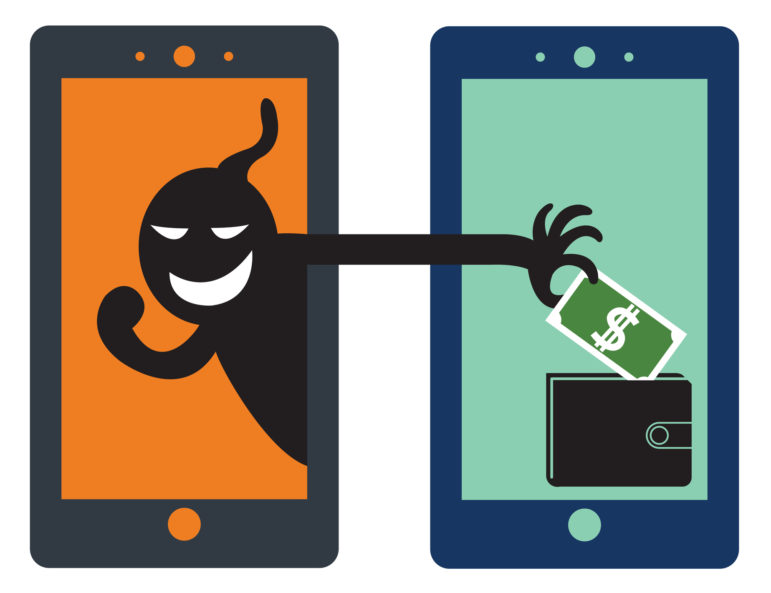
Gather ‘round, kids, while I wax nostalgic about the “good old days,” before Instagram, Facebook, and Twitter – before even MySpace! So old! Back when the internet was but a wee young thing, music was free, and we actually thought this would improve all of our lives. It was a simpler time.
Back then, practically everyone made personal websites with clashing colors and flashing text, promoting our ideas, our writing, our art, and our services. We all started self-publishing our books, art, and magazines, selling them directly to the people all over the world. Suddenly the idea of being an author or creator didn’t seem so far out of reach. All anyone needed was some talent, hard work, a computer, and access to the internet, and they too could be a professional creative. Nothing could stop us. We were gods.
In those early days our troubles were few – at least for men. Women were still subject to all of the horrible and disgusting behaviors for which men are so well-known, but as a culture we wouldn’t address that on internet spaces for many more years, so from a women’s perspective I suppose it was all pretty much business as usual.

I don’t even want to know who just sent her a pic of what. [DepositPhotos]
Sexual harassment aside, the biggest problem plaguing the internet in those days was obviously1 who to include in our MySpace “Top Eight.” Many hurt feelings and arguments ensued when some “friends” were ousted to make room for someone new. Lines were drawn. Alliances shifted. Enemies were made. This was all regular people stuff.
As more social media platforms appeared, each offering its own distinctive spin on blogging and media sharing, each gave opportunities for “regular people” to blossom, and shine, and offer their uniqueness to the world in a way previously never conceived. Alliances and tensions continued to spread, fueled at times by actual political parties and in some cases completely replacing our culture’s previous outlets for the dissemination of news. As algorithms began to evolve, our social media news feeds became increasingly disconnected and insular, giving rise to the cultural phenomenon of digital “bubbles.” (No, I am not referring to my infamous Instagram bathtub selfies, but thank you very much for asking).
While bath time might be my second favorite kind of bubble (right after my liberal one,) the reality is far more serious. These cultural bubbles have paved the way for the degradation of trust in our public institutions. Where once stood trusted sources of information, we now increasingly see insular communities getting their news and information from sites like YouTube, Reddit, and TikTok. Unlike legitimate news sources, these online platforms are not peer-reviewed (or even fact-checked, in most cases) and so misinformation runs rampant. When asked, some people justify this switch by invoking capitalism, explaining that most traditional news sources are corporate-sponsored and are therefore unreliable and not trustworthy. This, however, fails to consider that social media platforms are likewise sponsored by corporate dollars, regardless of content being largely generated by individual users. Here we have traded facts for a false sense of freedom.
Another problem that has been building since the inception of the internet is the phenomena known as “spam.” With apologies to Hormel, the American processed meat company, spam is the digital equivalent of “junk mail.” Over the years “spammers” have gotten more and more creative, and in addition to being simple junk mail, spam now poses the risk of containing malware, spyware, malicious links, as well as the bait for phishing scams, just to name a few. Where laws have been enacted to help stop the rise of spam, nothing has been able to significantly impact it, and it currently accounts for 85% of all email traffic today.

The internet is out to get you. Image: DepositPhotos
While spam and phishing harm the majority of internet users today, there is another problem that has recently crept into the occult corners of the internet, and one that is causing some very big problems for our teachers, artists, and content creators. I am talking about the rising number of attacks from the clones.
Now that I have the attention of Star Wars fans, let me explain. A “clone” is, in this context, is a type of scam account. The scammer duplicates the social media account of a legitimate content creator with the intention of tricking that creator’s followers into providing money or information.
In our occult world many of our content creators offer services, such as readings, consultations, etc. Often a scam account will duplicate the photos and written content from an authentic account and then send messages to their followers promising readings or other services. As soon as the unsuspecting victim pays for their promised service, the account blocks them, and the legitimate occultist is then blamed for perpetuating a scam.
This is a serious problem that potentially cheats people out of hundreds of thousands of dollars each year and undermines the trust in legitimate occultists and creators.

Will the real creator account please stand up? [DepositPhotos]
Services like Twitter and Instagram offer solutions for dealing with scam accounts, but often these prove to be little more than useless as offending accounts are left up for days, weeks, or even months before being finally taken down. Often the spammer returns with a new username shortly thereafter.
In his article How to Spot a Spiritual Impersonator Scam on Instagram (And What To Do), author Mat Auryn describes his personal experiences dealing with multiple of these fake accounts and gives several useful tips for how to spot a fake, as well as what actions to take once they are spotted. He offers screencaps of nearly a dozen fake accounts, each pretending to be him, and describes how a few of his followers were fooled into scheduling readings with the imposters before being blocked by the scammer and subsequently left with their wallets lighter than before, to the tune of hundreds of dollars.
The problem is that these scam accounts often look like the real deal. Much of this confusion could be avoided if platforms like Twitter and Instagram simply provided their users with easier ways to validate or verify their accounts, thus ensuring that users can easily see whether or not they are dealing with a legitimate company, service, brand, or content creator. While both Instagram and Twitter do have such policies and procedures in place, they are currently both notoriously difficult to navigate and the stringent requirements often leave creators unable to take advantage of the protections verification offers.
For example, as someone who uses a name in public that differs from my legal one, I am often left unable to participate in platforms’ verification programs, even as someone with more than twenty years of verifiable internet history and multiple books in mainstream publication. While that obstacle on its own might not be insurmountable, there are often other factors – some of which are not even explained! – to getting verified, leaving users scratching their heads when their applications are inexplicably denied.
Not only is this process frustrating, but it has also given rise to another type of scam.
Four months ago, I was approached by someone on Instagram claiming to work for their “verification and traffic department,” who offered to help me through their mysterious process and get my account one of the coveted blue checkmarks. I knew full well that this was a scam – Instagram’s validation process has been widely reported as being mysteriously opaque and difficult, and the account that contacted me did not even have a checkmark of its own. But I decided to have some fun and see what their next offer would be.
They proceeded to tell me that, for just $300, they could ensure my account could finally be verified. I eventually got bored and stopped responding to them. I did, however, report them to Instagram. Several times. Over the course of months. And nothing ever happened. As I was writing this, I decided to go back in and report them again. As yet, no action whatsoever has been taken and this scammer is still active on their platform, presumably targeting other individuals.
“It’s clear that Instagram doesn’t care about the safety of both the person being impersonated,” Auryn said in his article, “and more importantly those being scammed.” It is hard to argue with him.
Since the occult world is so small in comparison with more “mainstream” communities, this issue hits us particularly hard. In a field that is already regularly thought of as fraudulent, these incidents affect us exponentially. They not only further undermine the general public’s trust in occultism, but also the trust of sincere seekers whose experiences have been soured by those acting in bad faith.
More and more occult creators are finding that because of these issues, Instagram is no longer a viable place for them. Between the rampant scammers left largely unchecked, and Instagram’s own convoluted policies, Instagram is, simply put, not a safe space for occult content creators. Until they figure out their verification policies, it will continue to be a place where legitimate content creators will be pushed out in favor of scammers.
I am regularly seeing fake accounts impersonating my friends and colleagues, and these accounts stay up for days and even weeks after they have been reported. In my opinion, any legitimate business operating on Instagram should at least be wary until they do better. Without greater protections at what point does Instagram become complicit in the actual crimes being perpetuated using its platform?
If Instagram continues to ignore the problem, then the line between the scammer and the platform will be rendered virtually non-existent – effectively making Instagram just one more scammer out to get us.
1.This is sarcasm. I mean obviously. Right?↩
The Wild Hunt is not responsible for links to external content.
To join a conversation on this post:
Visit our The Wild Hunt subreddit! Point your favorite browser to https://www.reddit.com/r/The_Wild_Hunt_News/, then click “JOIN”. Make sure to click the bell, too, to be notified of new articles posted to our subreddit.